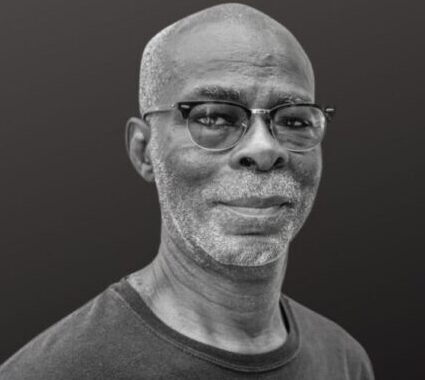
Does Dave Umahi Know Nigeria? (II)
I write the concluding part of this essay by confirming my support of Dave Umahi, the Minister of Works, to change Nigeria’s road transportation narrative.
In the first part, I invited him to look deeply into himself because, metaphorically, the journey he has chosen does not have a route back.
To demonstrate, let us return to the Lokoja-Benin City Road. Last week, I cited nearly a dozen instances of contract awards for this one road in the past two decades alone.
Some Nigerians will remember that when President Olusegun Obasanjo was running for a second term, conflict broke out within his Peoples Democratic Party concerning his spending on roads.
That followed Obasanjo’s disclosure that in his first term, some N300 billion had been budgeted for roads.Orji Kalu, who was at the time the Abia State Governor, challenged Obasanjo to tell Chief Anthony Anenih, his Minister for Works during that term, to point out where he had spent all that money, given the atrocious state of our roads.
Every government that has come along since then has thrown a lot of money and speeches into building roads, but the more money and speeches we have had, the worse the roads have become. This is the bottomless pit that confronts Minister Umahi.
The truth is simply that building roads in Nigeria is a racket. There is no relationship between road contracts and road development. This racket is the reason, for instance, why the same government which declared N300bn in four years in 2003 announced after its second term that it somehow spent only N299 bn in eight years!
In 2008, a sub-committee of the Senate on Transportation commenced an investigation of the sector, its report subsequently revealing a shameful pattern of fraud and mismanagement.
Premium Times described that report as “filled with revelations of alleged serial malpractices, and shows how, in 10 years (1999 to 2009), through multiple contract inflation frauds, connivance between contractors and government officials, some N645 billion was spent on 4,752 kilometres of road; shortchanging the government to the tune of N49 million on each kilometre of road worked on, amounting to approximately N233 billion.”
The sub-committee recommended that former Ministers Tony Anenih, Adeseye Ogunlewe, Obafemi Anibaba and Cornelius Adebayo “be prosecuted by the government for defrauding the nation.”
But the Senate never even debated the report. Perhaps it is no surprise, then, that the House of Representatives never followed up on its 2021 decision to investigate the N200bn Lokoja-Benin City highway, or that the reports of any investigations in both institutions since 1999 have vanished.
Why? The oversight function of the legislative branch has collapsed, surrendering to the seduction of the executive. It explains why neither the Senate nor the House has the kind of comprehensive archives of counterpart bodies around the world and is the industry standard.
Particularly when it comes to governments, we are a nation without official history. The current presidency, for instance, has no record of previous presidencies, all of them blocked or deliberately scrubbed clean like some juvenile library.
This is also why members of the legislature fight over so-called “constituency projects,” a Nigeriankleptocracy catchphrase. If you know of a single decent such project completed and put into public use by any current or former legislator—such as hospitals, schools, roads, or libraries—tell me so I can praise him.
Minister Umahi criticized the paralyzing performance of the Bureau of Public Procurement (BPP). But the BPP has hardly been reliable since 2016, the year that it stopped its detailed list of public contracts.
How does this play out in the Ministry of Works? At one point, the Ministry implemented the excellent idea of publishing on its homepage a list of all projects being undertaken. But that list is dated April 2017, meaning that it does not include any of the hundreds of projects or contracts that former Minister Babatunde Fashola boasted emptily about for eight years.
The list itself is thus the very illustration of why infrastructure construction and maintenance in Nigeria is not a serious enterprise. Some entries date from the Obasanjo Years, those marked “NEW,” being of the Muhammadu Buhari 2016/17 vintage.
The list demonstrates how the Ministry Works does not work, its road activities identified as: construction, reconstruction, rehabilitation, construction and rehabilitation, repairs, contract for completion, rescoping, emergency reinstatement, and dualization. In many cases, each activity is broken into sections and the sections into phases.
What does this mean for the annual death rate on our roads? It can mean anything: your road is probably a Section III Phase IV rehabilitation while it is being dualized, or maybe repair of emergency rehabilitation during reconstruction is being undertaken, or the reconstruction is in Phase II and a powerful Senator has been able to get emergency reinstatement for part of Phase III of Section I near his village while the rescoping of the last year’s rehabilitation is underway. In which case there is probably flooding or mud for 10 miles, suitable for herdsmen abductions, requiring a five-mile detour, and then deep pothole sand broken construction-equipment for the next 10miles because the dualizing contractor has moved into rescoping following a new contract for completion.
Got that? Of course not. It simply means that there is chaos in the capacity of Works even as Nigerians continue to perish in accidents. Ask yourself how many times Lokoja Benin—and then sections of it—have been contracted and re-contracted, broken into convoluted phases, without completion ever reported or celebrated. The system is evidently on autopilot, the objective being to sustain a deception of performance.
In one word, road infrastructure in Nigeria is now simply political hypnosis and an illustration of the futility of Nigeria itself. It is a pantomime of extremely busy officials holding up roads that need to be reconstructed or rehabilitated before they are completed.
Here is another way of looking at it: Months before Buhari left office, he launched Eyemark, a digital tool for Nigerians “to monitor and evaluate capital projects, in real-time, with unimpeded access to information on stakeholders, including contract terms and contractors.”
Last week, however, the Tinubu government, which publicly assumed Buhari’s assets and liabilities, commissioned Citizens’ Delivery Tracker, allegedly for the same function.
It is another illustration of how parallel, multi-level, multi-year, multi-administration, uncoordinated, incoherent, incompetent chaos in planning, spending and execution has given Nigerianot simply the world’s worst infrastructure, but also the largest assemblage of uncompleted projects, including in rail, schools and hospitals.
This is the one-way road Mr. Umahi travels. If he is not to join the league of former Works Ministers who shed fake tears, he must admit that the terrible state of Nigerian roads is man-made. He must rethink and revampWorks altogether.
Of thee Lagos-Calabar Coastal Highway, about which a controversy has erupted, I say this: Enugu-Onitsha, East-West, Kano-Maiduguri, Lagos-Ibadan, Abuja-Kano. These are highways.
Buhari’s Abuja-Lagos Greenfield Expressway? That was April fool.
Tinubu’s N15.6 trillion, eight-year, 700km Lagos-Calabar Coastal Highway with a yet-to-be-costed-train-to-nowhere-in-particular in the middle? At N15.6trillion, just for the road, that is fiction.


